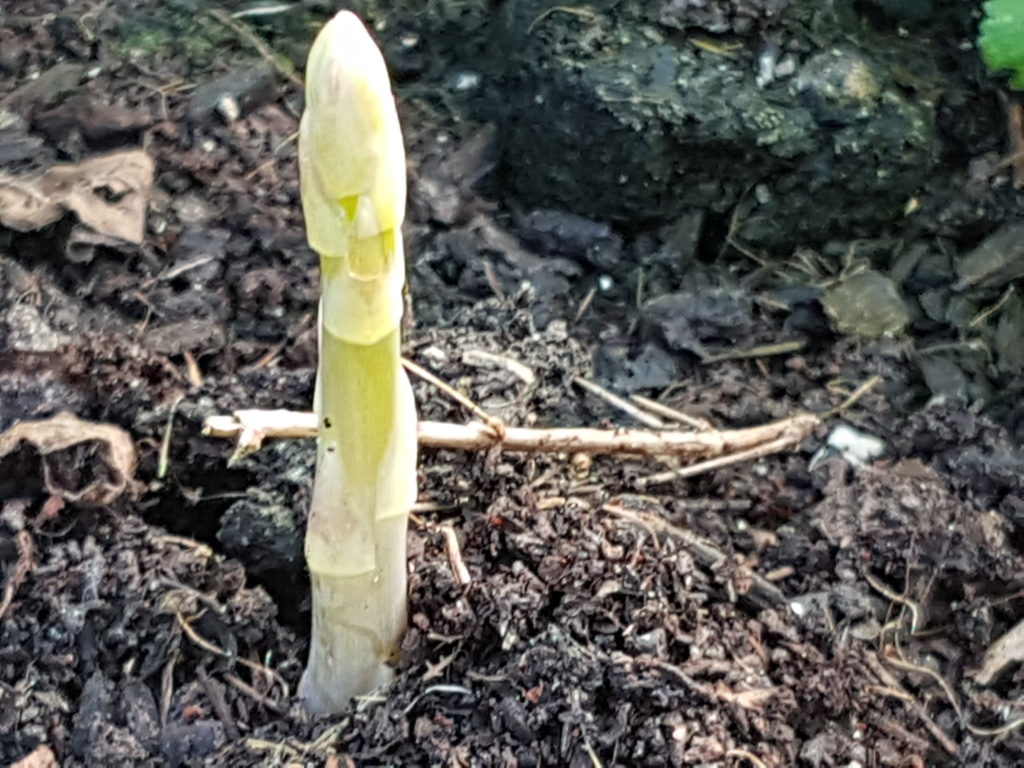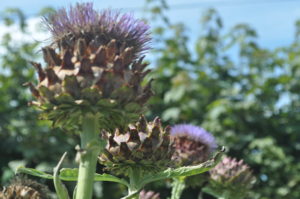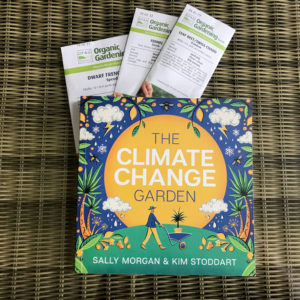Guest post: in an extract from her new book, The Climate Change Garden, author Kim Stoddart explains how to get more resilient through the use of longer-lasting plants on the veg patch…
As the impact of climate change really starts to bite, growing at least some of your own food has arguably become more important than ever before in our recent history.
A flood or drought in one part of the world, decimating harvests of certain produce, can have a dramatic knock-on impact on prices in the UK. The same goes for supply and demand itself. For example in the prolonged heatwave of 2018, whilst demand for summer salad soared, veg growers were struggling to keep up as lettuce simply stops growing in temperatures above 30 degrees celsius. The industry for a time become reliant on imports and so, as a result, prices rocketed.
Weathering the storm
Perennials are incredibly useful plants as their longevity enables them to stand firm relatively easily against more challenging climatic conditions. With their deeper root structure, they are able to seek out moisture more effectively during a dry patch and will also help to absorb an excess of rainwater to the benefit of the plants surrounding them during storm after storm. The fact that the ground they grow in is also undisturbed as a result provides benefit in a myriad of exciting ways we don’t yet understand. In an underground world of symbiotic, fungi and microbial activity, there is a natural boon to the health and vitality above ground that is rather marvellous indeed.
Pick of the best perennials
Rhubarb
Rhubarb may not be glamorous, but this stalwart fruit is very weather hardy and reliable. It will reappear like clockwork each spring, year after year once fully established, and can handle regular pickings. Once a plant gets really big, it’s root ball will just need dividing(cutting through in half with a spade) affording you with another rhubarb plant (or cut in half again), three to be planted out elsewhere on your patch.
Asparagus
Easily grown from seed or planted on from bought-in crowns, this delicious perennial will, when established (in year three), keep on providing for many, many more seasons (up to thirty potentially). So, the relatively slow investment of patience in the first few years before you can take your first harvest will be paid back with plentiful return thereafter.
These plants just required a nutrient-rich, pervasive-weed-free patch of ground as their long term home.
Jerusalem Artichoke
This rich, nutty tuber fits in well to the climate change garden. Its tall-growing stems can provide a useful barrier on the veg patch surround against the wind to the benefit of your plot overall. It will cast shade, so that’s worth bearing in mind, but otherwise, these tasty tubers can be harvested in late autumn/early winter onwards. You also don’t need to worry about leaving some in the ground to grow on the following season because you always will, whether you mean to or not, as they have a survival instinct of producing tubers deep in the ground, enabling new plants will form with gusto, come spring for more of the same.
Sorrel
This zesty leaf provides a valuable addition to any veg patch. Its leaves are delicious in any number of dishes, and it requires little to no care what-so-ever.
Cardoon and globe artichoke
These thistle-like, highly ornamental plants will reliably return each year with just a little care.
In the case of the globe artichoke, the heads themselves are edible, while with cardoon it’s the blanching stalks which are highly prized in the kitchen.
The Unexpected Perennial
You can also experiment with growing on some of your plants longer than you might have expected were otherwise possible. The benefits of doing so are also large. In the case of the brassica family, for example, plants like kale and broccoli can be grown on for at least a few seasons. They will attempt to flower and set seed in their second year so you just need to be cut back carefully when they do, but the amount of produce each greatly sized plant will provide is rather astonishing and impressive when compared to that season’s fresh grown. Growing such produce on in this way enables you to access a bumper harvest for little to no work at all, whilst reaping the benefits of a perennial to the soil and resilience of your plot.

About the Climate Change Garden Book
Co-written with Soil Association magazine editor, Sally Morgan, the book aims to empower you with the knowledge, skills and confidence to become a climate change savvy gardener. It can be purchased here.
Special Offer
Kim writes for a range of national publications and runs popular polytunnel growing and get climate change smart day courses. She is offering us a special 20% off all 2020 bookings made before the end of November 2019. Just mention Suttons when booking online to take advantage of the specially discounted price of £76. See www.greenrocketcourses.com for available dates and more details.
Last Updated on December 21, 2023 by Suttons Horticultural Team







